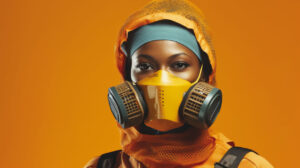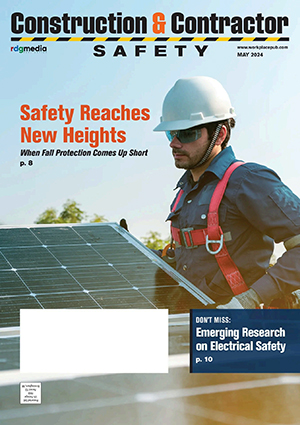ANSI/AIHA/ASSP Z88.10-2010 – Respirator Fit Testing Methods
“OHD is honored to develop and supply technologies that help organizations protect the health and safety of their employees and maintain compliance. We truly value all efforts that serve to protect our most valuable assets: our people.” – Dr. Stephanie Lynch, CSP, Senior Research and Technology Manager at Occupational Health Dynamics (OHD). 205-980-0180. www.ohdusa.com
A respirator must not only provide protection from harmful substances; it must also fit correctly and comfortably. An ill-fitting respirator may allow the wearer to ingest toxins which can cause respiratory and other types of illnesses. If it is not comfortable, the wearer may be disinclined to wear it, or to wear it for the length of time he or she should, in specific work environments.
There are two types of fit testing: qualitative and quantitative. Qualitative fit testing determines if there is leakage by relying on the wearer’s sense of smell or taste to detect whether or not a test agent is entering the respirator through a poor face seal against the skin. A quantitative fit test provides quantitative, or numerical, measurements of the amount of face seal leakage present when a user wears a respirator. Because quantitative fit testing requires that a hole be punched in the respirator to perform the test, the respirator must be disposed of after the test.
The benefits of a fit test include better protection for the employee and verification that the employee is wearing a correctly-fitting model and size of respirator.
About the Standard
The purpose of this standard is to provide clear and consistent guidance with regard to the respirator fit testing components of an effective respiratory protection program.
The respirator fit test itself is simply one facet of fit testing. An effective program requires much more, including a qualified person to perform the fit test. This standard provides guidance on exactly what knowledge and skills are necessary in order to perform as a qualified fit test operator.
This standard contains information to aid program managers and fit test operators in preparing to perform a proper fit test. This includes guidance regarding potential interference from other personal protective equipment with the respirator, detailed information on respirators used for fit testing, selection of respirators prior to fit testing, and other considerations that must be met if the fit test is to be effective.
A single fit test exercise protocol cannot model all workplace activities encountered by respirator users. Recognizing this, the standard provides flexibility regarding fit test exercise protocols.
Exercises may be selected that are more representative of actual workplace activities, including repeated respirator donning.
ANSI/AIHA/ASSP Z88.10-2010 addresses:
- Qualifications of fit test operators
- Medical evaluations
- Training for respirator wearers
- Interference concerns
- Frequency of fit tests
- Respirators used for fit testing
- Test requirements common to all fit tests
- Quantitative Fit Test (QNFT) methods: generated aerosol; particle-counting instrument and Controlled Negative Pressure (CNP)
- Qualitative Fit Test (QLFT) methods: isoamyl acetate (banana oil); sodium saccharin aerosol and Bitrex™ (denatonium benzoate) solution aerosol
- Test exercises: duration of; required and elective exercises and optional exercises
- Record keeping for fit tests, equipment and training of fit test operators
Annexes include an evaluation form for the respirator fit test operator, criteria for evaluating new fit test methods and future research areas.
Conducting a Seal Check
A user seal check is a quick procedure that someone does every time they wear a respirator (after successfully passing a fit test), to make sure the respirator is donned properly. The user seal check can be either a positive pressure or negative pressure check. The appropriate type of user seal check depends on the respirator.
Positive pressure user seal check: The person wearing the respirator exhales gently while blocking the paths for air to exit the respirator to make sure there aren’t any leaks. A successful check is when slight pressure builds up in the respirator without any leakage.
Negative pressure user seal check: The person wearing the respirator quickly inhales while blocking the paths for air to enter the facepiece. A successful check is when the facepiece collapses slightly under the negative pressure.
About Medical Evaluations
A medical evaluation determines one’s ability to wear a respirator. A medical evaluation must be done before fit testing and before a respirator is used in a workplace. After that, an additional medical evaluation may be done if a wearer has or develops a condition or symptoms that may affect their ability to use the assigned respirator.
ANSI/AIHA/ASSP Z88.10-2010, as well as related standards (ANSI/AIHA/ASSE Z88.6-2006: Respiratory Protection – Respirator Use – Physical Qualifications for Personnel and ANSI/AIHA/ASSE Z88.7-2010: Color Coding of Air-Purifying Respirator Canisters, Cartridges, and Filters) are available at: https://webstore.ansi.org/industry/safety/z88-respirator-protection WMHS




